 Electric jigsaws are of type AL-1, AL-2, produced by Cheboksary electric plant, the range of work performed is very limited. For example, due to the design features of the jig saw it is impossible to work with a wide sheet of plywood or plastic. And cutting tool quickly fails: the files are often broken or torn.
Electric jigsaws are of type AL-1, AL-2, produced by Cheboksary electric plant, the range of work performed is very limited. For example, due to the design features of the jig saw it is impossible to work with a wide sheet of plywood or plastic. And cutting tool quickly fails: the files are often broken or torn.“FIGURE” SAW
 Electric jigsaws are of type AL-1, AL-2, produced by Cheboksary electric plant, the range of work performed is very limited. For example, due to the design features of the jig saw it is impossible to work with a wide sheet of plywood or plastic. And cutting tool quickly fails: the files are often broken or torn.
Electric jigsaws are of type AL-1, AL-2, produced by Cheboksary electric plant, the range of work performed is very limited. For example, due to the design features of the jig saw it is impossible to work with a wide sheet of plywood or plastic. And cutting tool quickly fails: the files are often broken or torn.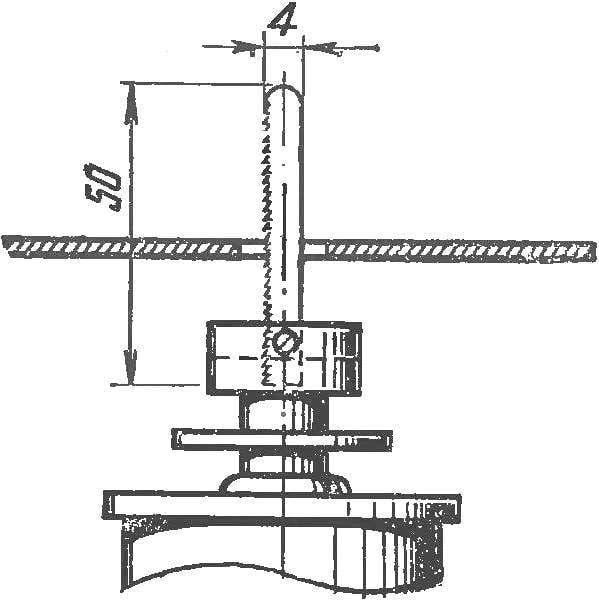

 CHAINMAIL FOR THE METAL. Like invisible arrows, affects the corrosion of metal surfaces operating in hostile or wet environments. Rust stains, caked wounds cover almost the entire surface of the structure, reducing its strength, significantly reducing the service life. Widely used for corrosion control coatings are not always effective, especially in high temperatures.
CHAINMAIL FOR THE METAL. Like invisible arrows, affects the corrosion of metal surfaces operating in hostile or wet environments. Rust stains, caked wounds cover almost the entire surface of the structure, reducing its strength, significantly reducing the service life. Widely used for corrosion control coatings are not always effective, especially in high temperatures.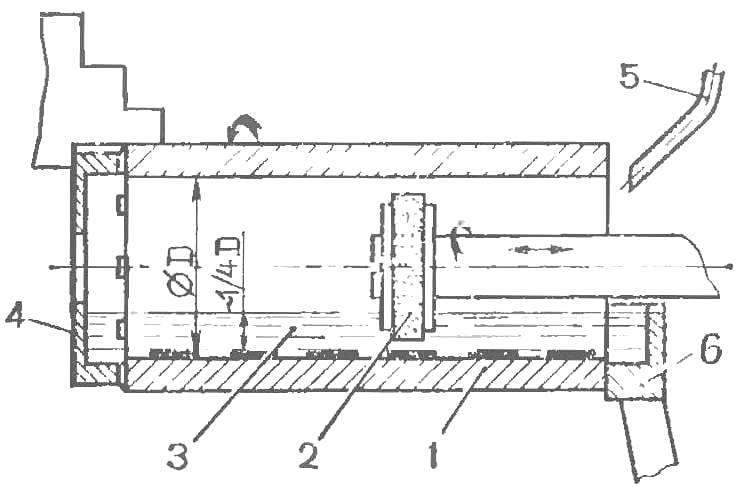
 An ingenious solution processing grinding wheel internal surface of tubes or hollow parts offered innovators N. Epifanov, A. Chuprikov, Y. Shabalin.
An ingenious solution processing grinding wheel internal surface of tubes or hollow parts offered innovators N. Epifanov, A. Chuprikov, Y. Shabalin.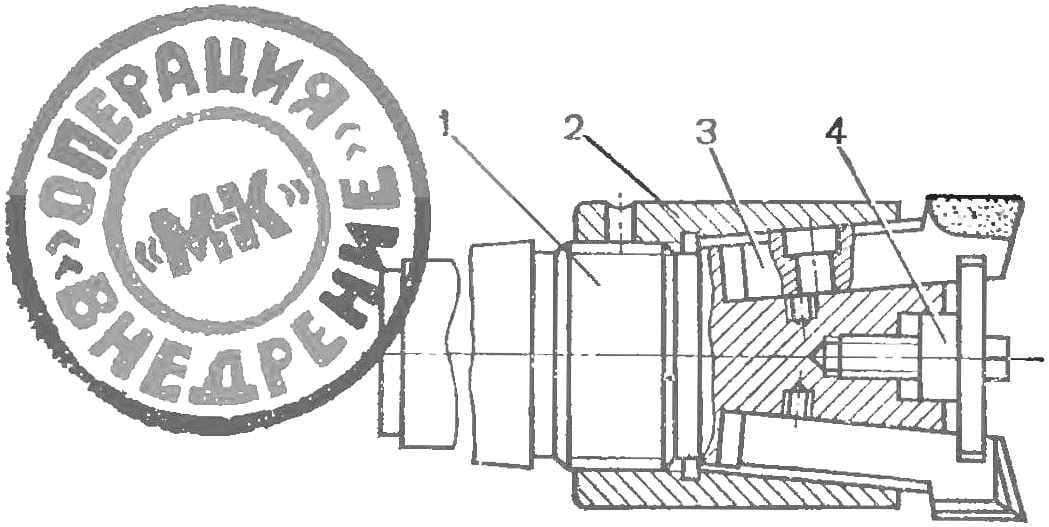
 Yes, how would it work, no matter how perithecial — it does not decrease! To maintain a times a predetermined diameter with high accuracy allows her to design feature.
Yes, how would it work, no matter how perithecial — it does not decrease! To maintain a times a predetermined diameter with high accuracy allows her to design feature.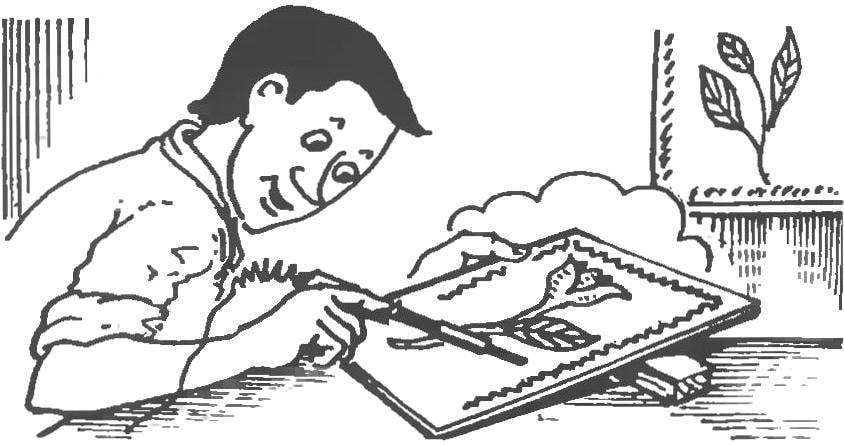
 Very often for finishing wood products use burning. Even if this operation is performed by a special device — cautery, it is very time consuming, especially when applied to a variety of complex patterns. I want to offer successfully tried mechanized method of burning intricate patterns and various applications. It is much more productive than the traditional method and besides, it was pretty spectacular.
Very often for finishing wood products use burning. Even if this operation is performed by a special device — cautery, it is very time consuming, especially when applied to a variety of complex patterns. I want to offer successfully tried mechanized method of burning intricate patterns and various applications. It is much more productive than the traditional method and besides, it was pretty spectacular.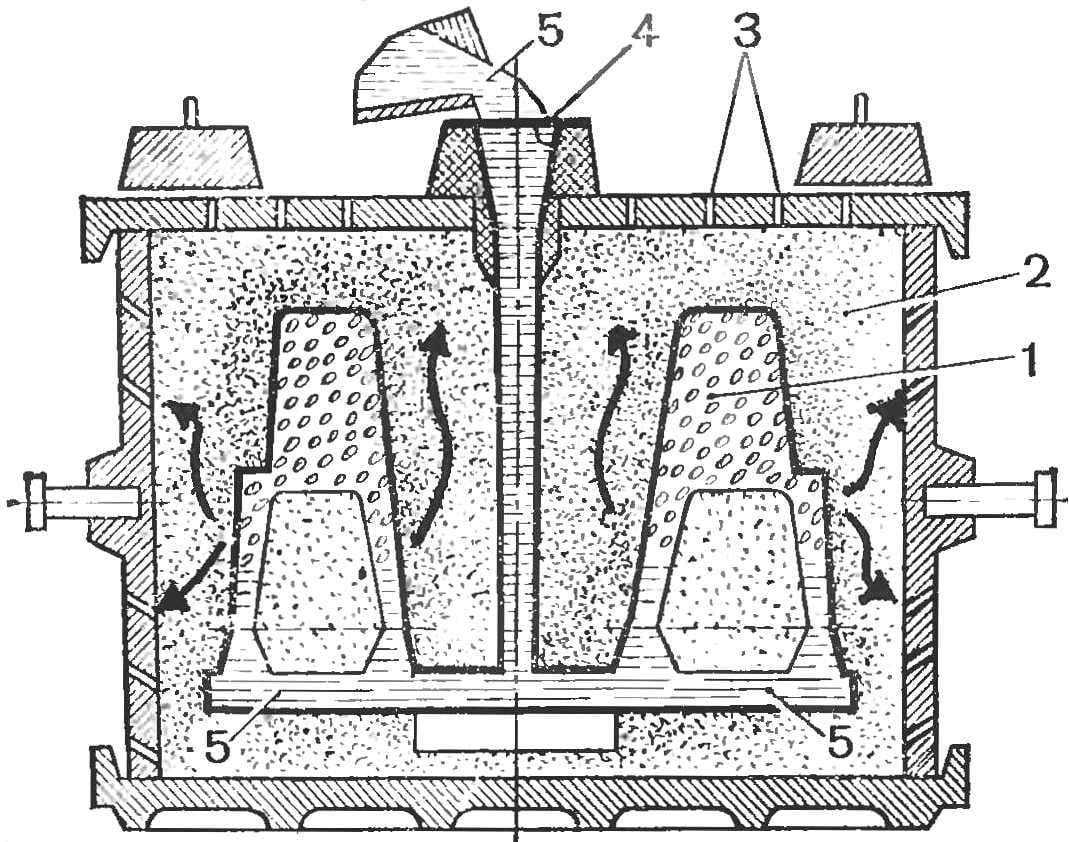
 Not only the shipbuilders there is a need for one-time, single steel casting of certain parts. In these cases, existing technology has to pre-make a wooden model to receive the outdoor imprint in the mold and core boxes for the formation of internal cavities of the casting. The complexity of manufacturing of model kits three to five times higher than the complexity of manufacturing of the castings.
Not only the shipbuilders there is a need for one-time, single steel casting of certain parts. In these cases, existing technology has to pre-make a wooden model to receive the outdoor imprint in the mold and core boxes for the formation of internal cavities of the casting. The complexity of manufacturing of model kits three to five times higher than the complexity of manufacturing of the castings.
 The working head of the machine, snake obviouses his bracket around the pipe, produces a hissing blue tongue of flame. Licking the metal, as if it bites into him and now burns through, slowly slitting thick wall pipe.
The working head of the machine, snake obviouses his bracket around the pipe, produces a hissing blue tongue of flame. Licking the metal, as if it bites into him and now burns through, slowly slitting thick wall pipe.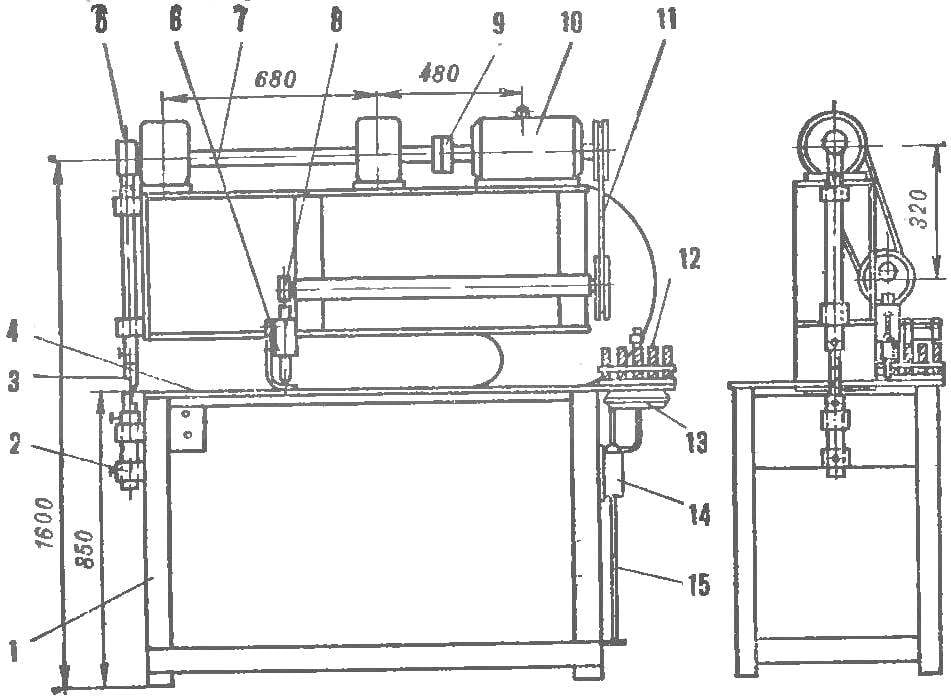
 When repairing machinery, especially agricultural, are quite common and at the same time melomakarouna operations cutting of sheet iron, and the manufacture of cardboard strips with holes. Often these works are performed with hand tools that does not provide neither the productivity nor quality.
When repairing machinery, especially agricultural, are quite common and at the same time melomakarouna operations cutting of sheet iron, and the manufacture of cardboard strips with holes. Often these works are performed with hand tools that does not provide neither the productivity nor quality.
 Where will be introduced the trailer (see Fig.), developed plant facilities carpool trust Kuzbasstrans of Glavkuzbasstroy, will not require workers to dump taken on it lumber. A whole load of neat package “move out” on the ground because of the properties of the tipper trailer. This means that won’t affect the quality of the material brought will reduce the downtime of the car for unloading.
Where will be introduced the trailer (see Fig.), developed plant facilities carpool trust Kuzbasstrans of Glavkuzbasstroy, will not require workers to dump taken on it lumber. A whole load of neat package “move out” on the ground because of the properties of the tipper trailer. This means that won’t affect the quality of the material brought will reduce the downtime of the car for unloading.
 How soft and manageable fire “snakes” rolled in the hands of the rollers, they are so stubborn and hard to handle in the cold when cutting them on the measuring of the workpiece. Cutting methods — sawing with diamond discs, gas or plasma cutting or not give a smooth, does not require additional processing of the edge of the workpiece, or entail a significant waste of metal.
How soft and manageable fire “snakes” rolled in the hands of the rollers, they are so stubborn and hard to handle in the cold when cutting them on the measuring of the workpiece. Cutting methods — sawing with diamond discs, gas or plasma cutting or not give a smooth, does not require additional processing of the edge of the workpiece, or entail a significant waste of metal.